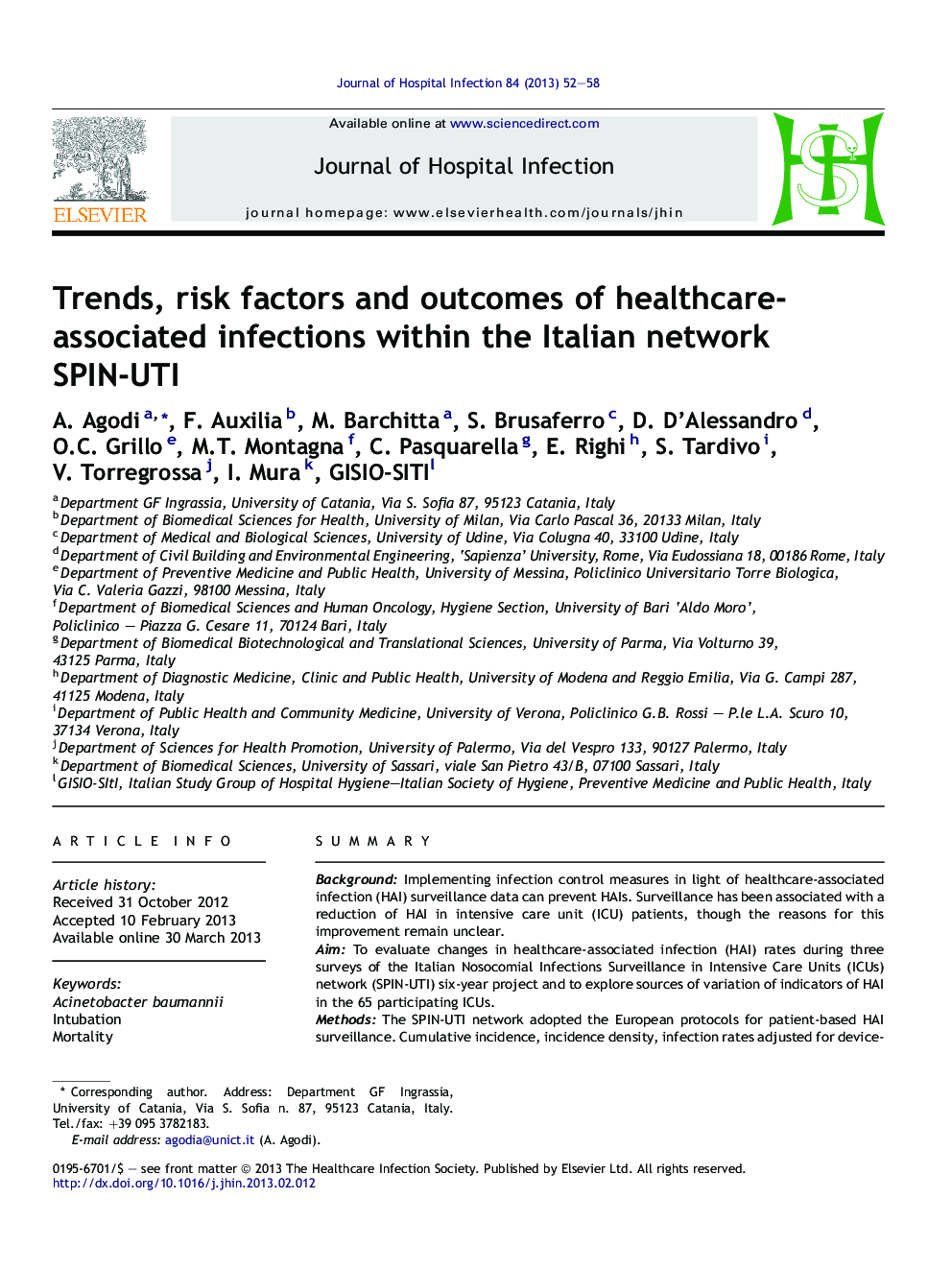| کد مقاله | کد نشریه | سال انتشار | مقاله انگلیسی | نسخه تمام متن |
|---|---|---|---|---|
| 3371690 | 1219220 | 2013 | 7 صفحه PDF | دانلود رایگان |

SummaryBackgroundImplementing infection control measures in light of healthcare-associated infection (HAI) surveillance data can prevent HAIs. Surveillance has been associated with a reduction of HAI in intensive care unit (ICU) patients, though the reasons for this improvement remain unclear.AimTo evaluate changes in healthcare-associated infection (HAI) rates during three surveys of the Italian Nosocomial Infections Surveillance in Intensive Care Units (ICUs) network (SPIN-UTI) six-year project and to explore sources of variation of indicators of HAI in the 65 participating ICUs.MethodsThe SPIN-UTI network adopted the European protocols for patient-based HAI surveillance. Cumulative incidence, incidence density, infection rates adjusted for device-days, and device utilization ratios were calculated for each survey and compared. To identify risk factors multiple logistic regression analyses were performed. Crude excess mortality was computed as the difference between the crude overall case-fatality rate of patients with and without HAI.FindingsThe risk of ICU-acquired infections increased in the third survey compared with previous (relative risk: 1.215; 95% confidence interval: 1.059–1.394). Among risk factors, the number of hospitalized patients requiring ICU admission and the Simplified Acute Physiology Score II increased from 73.7% to 78.1% and from 37.9% to 40.8% respectively. Although mortality rates remained unchanged, HAIs trebled the risk of death. Acinetobacter baumannii was the most frequently reported micro-organism in the third survey (16.9%), whereas in the previous surveys it ranked third (7.6%) and second (14.3%).ConclusionsThe study highlighted the increased risk of HAI, at least partially explained by the greater severity and number of hospitalized patients requiring ICU admission. Furthermore, the management of intubation procedures and of ventilated patients was identified as a potential target for infection control interventions to decrease the growing risk of HAI in ICUs.
Journal: Journal of Hospital Infection - Volume 84, Issue 1, May 2013, Pages 52–58